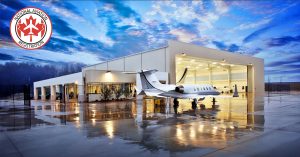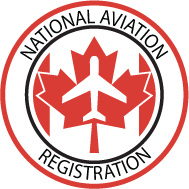Before operating an aircraft legally in Canadian airspace, it must be properly registered. Aircraft initial registration is a requirement of Transport Canada Civil Aviation (TCCA) and must be completed before the aircraft can be flown, sold, or even advertised for sale. Our service exists to help individuals and companies complete this process efficiently, accurately, and without unnecessary delays.

To complete an aircraft initial registration, applicants must submit several required documents and meet specific eligibility criteria.
The most important items required for the process include:
- A completed Form 26-0522 – Application for Registration of Aircraft.
- Proof of ownership, such as a bill of sale, lease, or purchase agreement.
- A declaration of eligibility for registration.
- Marking of the aircraft with the appropriate registration marks (call signs).
- A valid Certificate of Airworthiness or an intention to obtain one.
- Payment of any required registration fees.
These documents must be submitted accurately, legibly, and in full. Any mistakes or missing items may delay the processing of the application.
Who Can Register an Aircraft in Canada?
Aircraft may be registered to individuals or legal entities, but only certain persons or entities meet Transport Canada’s requirements. Canadian citizens or permanent residents may register aircraft in their name, as can corporations that are incorporated under Canadian law with Canadian ownership and control.
Foreign individuals or corporations generally cannot register their aircraft in Canada unless specific exemptions apply. For example, a foreign lessee operating a Canadian aircraft under a long-term lease may be eligible under some circumstances, provided that Canadian interests retain a degree of oversight and the aircraft will be primarily operated in Canada.
We assist applicants by walking them through these eligibility requirements step-by-step to ensure their submission meets Transport Canada’s standards from the start.
Can a Non-Owner Register an Aircraft?
Only the legal owner of an aircraft can register it in Canada. Proof of ownership must be included with the application. This proof typically comes in the form of a bill of sale or other legally binding agreement that demonstrates the transfer of the aircraft to the registrant.
However, some exceptions exist, such as trustee arrangements or lease agreements, when registered agents act on behalf of owners. These arrangements are more complex and may require additional documentation and review.
If you’re uncertain whether your ownership structure qualifies, our team can help clarify your situation and guide you in submitting the necessary paperwork.
What Happens After I Register My Aircraft?
Once your aircraft has been successfully registered, Transport Canada will issue a Certificate of Registration. This document must be kept on board the aircraft at all times during operation. It contains important details including the registration mark, owner’s name, and the aircraft’s manufacturer and model.
The aircraft must then also meet airworthiness requirements and undergo regular inspections. Registration is just one part of overall compliance, but it’s the first and most crucial step in bringing your aircraft into active service.
Our portal makes this process smoother by checking your application for common errors and ensuring your submission meets Transport Canada’s technical requirements the first time.
Does the Aircraft Need to Be in Canada to Be Registered?
Not necessarily. An aircraft may be outside of Canada when initially registered, but it must meet all the same documentation and eligibility standards. It must also be brought into conformity with Canadian requirements for marking, airworthiness, and maintenance before being operated in Canada.
We help clients inside and outside of Canada get started with their registration, offering digital tools and a streamlined application interface to help ensure success no matter where they’re located.
What If the Aircraft Was Previously Registered in Another Country?
When registering an imported aircraft or one that was previously on a foreign registry, additional documentation is required. This typically includes:
- Proof of de-registration from the foreign authority.
- A conformity inspection with Canadian standards.
- Documentation verifying the aircraft’s identity and airworthiness.
Transport Canada must ensure that the aircraft does not remain on another national registry at the same time, in accordance with international aviation agreements. Our portal helps applicants navigate this additional layer of paperwork and speeds up the transition into the Canadian register.
Do I Need to Choose Registration Marks Before I Register?
Yes. All Canadian aircraft must display approved registration marks (commonly known as the aircraft’s call sign). These marks follow the “C-Fxxx” or “C-Gxxx” format. Applicants can request specific marks if available or let Transport Canada assign one.
Marks must be affixed to the aircraft in accordance with Canadian Aviation Regulations. This involves specific guidelines for size, placement, and visibility. Improper marking is one of the most common reasons applications are delayed.
How Does Your Portal Make Registration Easier?
Processing times vary depending on application accuracy, documentation quality, and Transport Canada’s internal workload. However, errors or omissions in the application are the most common causes of delay.
By submitting through our service, applicants benefit from:
- Application accuracy checks.
- Prompt document uploads.
- Guidance on required forms.
- Real-time status tracking.
We focus on reducing the back-and-forth that often happens when applicants apply directly and miss a requirement or submit incomplete forms.
Our online portal is designed to reduce the stress, confusion, and delays that many aircraft owners face when registering an aircraft for the first time. Rather than requiring you to download, print, and fill out complicated Transport Canada forms by hand, we offer a digital, guided interface that simplifies every step.
We help by:
- Providing direct access to required forms in one place.
- Offering intuitive guidance for each section of your application.
- Making it easy to upload and attach documents securely.
- Eliminating guesswork around eligibility, documentation, and legal compliance.
- Helping you avoid common errors that lead to rejections.
Is Aircraft Initial Registration the Same as Airworthiness Certification?
No. Aircraft registration and airworthiness certification are two distinct processes. Registration confirms legal ownership and assigns an aircraft to the Canadian register. Airworthiness certification, on the other hand, involves proving the aircraft is safe for flight and complies with Canadian aviation standards.
While you can apply for registration without airworthiness certification in hand, you’ll need to obtain it before operating the aircraft. In most cases, the registration process must be completed first.
We assist in submitting your registration documents so you can then move forward confidently with the next step in the process.
What If I Make a Mistake on the Application?
Mistakes or missing information can result in delays, returned forms, or outright rejection. If you apply directly and submit incomplete paperwork, Transport Canada may take additional time to notify you, during which your aircraft cannot legally be operated.
Our service reviews your application before submission to catch errors early. We help ensure that your proof of ownership is valid, that your eligibility is clear, and that all information is typed and formatted according to Transport Canada’s specifications.
This proactive review dramatically improves your odds of getting registered quickly and without unnecessary setbacks.
Is the Certificate of Aircraft Registration Permanent?
The Certificate of Registration remains valid unless ownership changes, the aircraft is destroyed or removed from service, or the aircraft is transferred out of the Canadian registry. Owners must notify Transport Canada if any of these changes occur.
Renewal is not required unless the registration lapses or becomes invalid due to a change in the aircraft’s status. We assist with re-registration and transfer processes as well, should your aircraft’s ownership or purpose change in the future.
If You’re Ready to Begin the Aircraft Initial Registration Process
If you’re ready to register your aircraft, our streamlined portal is open 24/7 and accessible from any device. Whether you’re a private owner, a corporation, or a representative completing the process on someone else’s behalf, we provide the resources and tools you need to make the registration process easier, more efficient, and more accurate.
From helping you avoid common mistakes to guiding you through eligibility and documentation, we’re here to support every step of your aircraft’s journey into Canadian skies.
